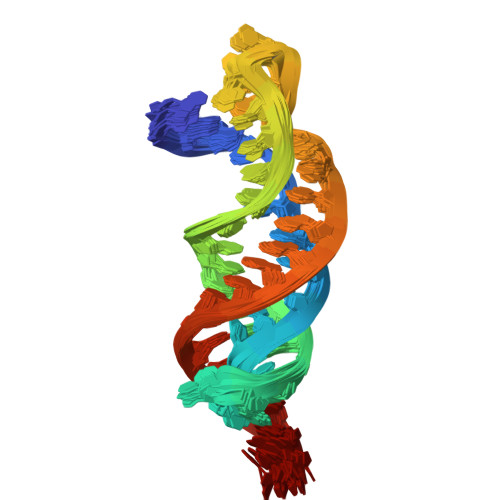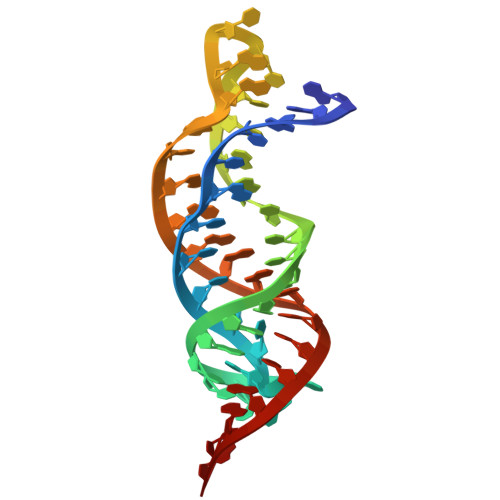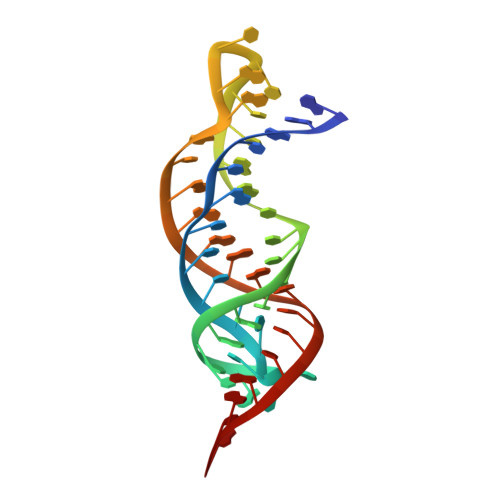Structure of the human telomerase RNA pseudoknot reveals conserved tertiary interactions essential for function
Theimer, C.A., Blois, C.A., Feigon, J.(2005) Mol Cell 17: 671-682
- PubMed: 15749017
- DOI: https://doi.org/10.1016/j.molcel.2005.01.017
- Primary Citation of Related Structures:
1YMO - PubMed Abstract:
Human telomerase contains a 451 nt RNA (hTR) and several proteins, including a specialized reverse transcriptase (hTERT). The 5' half of hTR comprises the pseudoknot (core) domain, which includes the RNA template for telomere synthesis and a highly conserved pseudoknot that is required for telomerase activity. The solution structure of this essential pseudoknot, presented here, reveals an extended triple helix surrounding the helical junction. The network of tertiary interactions explains the phylogenetic sequence conservation and existing human and mouse TR functional studies as well as mutations linked to disease. Thermodynamic stability, dimerization potential, and telomerase activity of mutant RNAs that alter the tertiary contacts were investigated. Telomerase activity is strongly correlated with tertiary structure stability, whereas there is no correlation with dimerization potential of the pseudoknot. These studies reveal that a conserved pseudoknot tertiary structure is required for telomerase activity.
Organizational Affiliation:
Department of Chemistry and Biochemistry, University of California, Los Angeles, Los Angeles, California 90095, USA
















